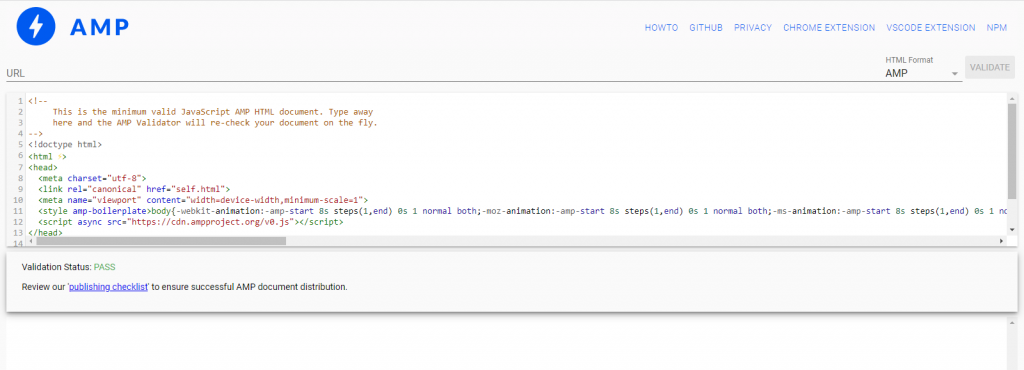How to check your site Accelerated Mobile Pages (AMP) setup
Accelerated mobile pages, also known as AMP, are used for developing websites that load quickly and look nice on mobile devices. Having a website that is compatible with mobile devices is essential for your online presence since there are currently more people using smartphones than desktop computers.
The AMP Test is used to determine whether or not an AMP page is legitimate and whether or not it has been configured correctly to show up in the search results on Google. Let’s take a look at how the test ensures that pages match the criteria for being mobile-friendly.
Why AMP?
More than 40% of consumers will leave a page if it takes longer than three seconds to load. Reducing the load time of your mobile web pages should improve your visitors’ engagement and minimize bounce rates. Faster page loads are the most evident benefit of using AMP pages.
AMP HTML is designed for ease, which is why the pages load faster. It’s easier for browsers to interpret, and the code is pared down to help developers avoid errors.
Using AMP pages also contributes to better search ranking. Most search engine optimization specialists already know that Google emphasizes AMP pages more than standard web pages.
Requirements for valid AMP pages
In order for web pages to be AMP pages they must meet specific requirements. AMP pages must:
- Begin with the doctype <!doctype html>
- Have a top-level <html> tag
- Possess <head> and <body> tags
- Heads of AMP documents should include a < link rel=”canonical”> tag that identifies an alternate version of the AMP HTML document or the AMP document itself if no alternate version is available.
- Ensure that the first child of their head tag is a meta charset=”utf-8″> div.
- Have a head tag with the meta name=”viewport” content=”width=device-width”> tag.
- Have a header tag with the AMP boilerplate code (head > style[amp-boilerplate] and noscript > style[amp-boilerplate]).
The AMP HTML will be declared invalid and may not appear in mobile search results if any essential components are missing or incorrectly set up.
How to ensure your site has Accelerated Mobile Pages set up correctly
The search results only show AMP URLs that are legitimate. Therefore, a website should be tested before it goes live to ensure all pages work appropriately on AMP.
Password-protecting test and staging environments are common practices for developers. You should do this to keep Google from indexing the pages during the verification process.
The AMP Validator tool is one of the top choices for speedy testing. You can simply paste your source code into this free tool and check for potential issues. Validation is shown by the words PASS. Any pages with errors will be given a FAIL notice.

Accelerated Mobile Page FAQs
Can you use AMP for e-commerce sites?
AMP can be used for any website, including e-commerce sites. However, to be on the safe side, you should always think twice about whether or not AMP is a good fit for your website. If you are using an ecommerce platform to process sales, you may want to ask your customer service rep for advice on using AMP HTML.
Does AMP work with ads?
AMP advertising can indeed be used. The AMP project hopes to improve the user’s experience by making ads faster and eliminating interruptions. The ad’s visibility, click-through rate, and profitability will all be enhanced as a result.
Final word on checking your AMP page set up
As you have now learned, using Accelerated Mobile Pages (AMP) is a fantastic method for improving the load speed of web pages – as long as it’s done correctly. An online AMP test tool is an easy way to check the set up and catch issues before pages go live. In the end, AMP will provide a superior user experience (UX) when delivering your content, particularly for consumers on mobile devices, and that’s reason enough for using it.
If you’re looking for SEO project management software to better manage your workflow, clients, and business – evisio.co is your solution. Try evisio.co for free here!
